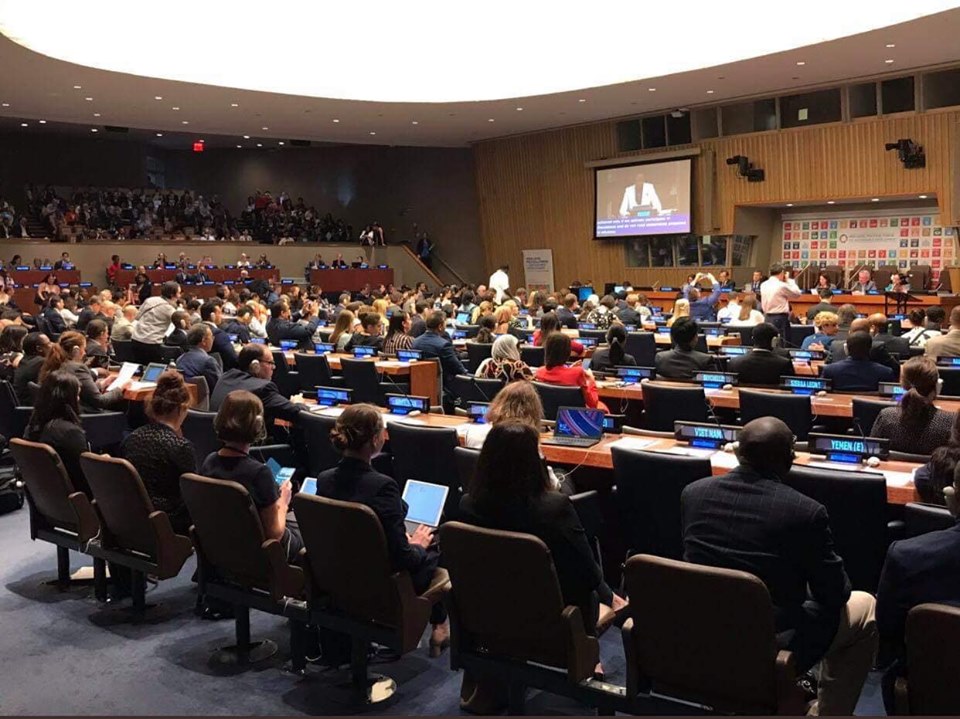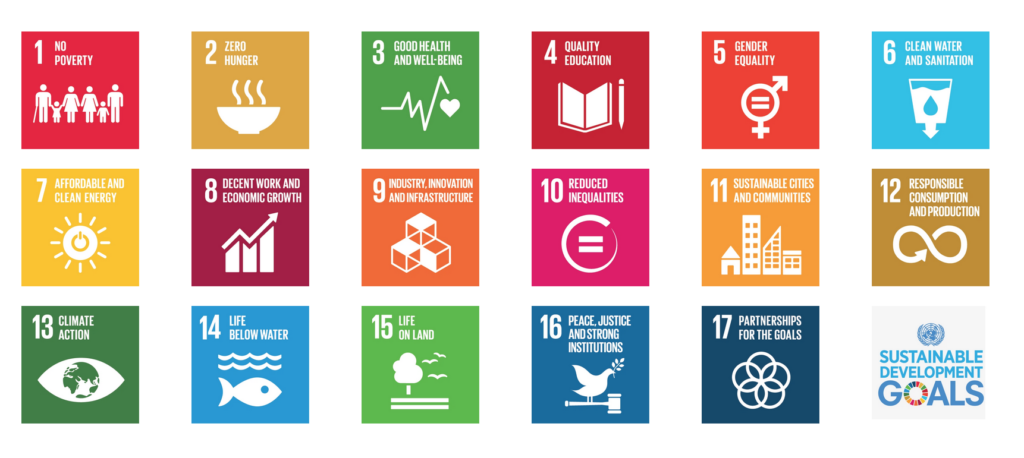
Due to various connections, I was asked to deliver the opening keynote speech at the United Nations High Level Political Forum last week (some coverage here).
It was one of those rare occasions where I got nervous, looking out at the faces of dignitaries from nations all over the world. In the row in front of me where the A-B nations such as Azerbaijan and Barbados. I could see the C-nations behind them, such as Chad and Colombia, but by the time I got to Ecuador and Honduras my eyesight failed me. It was a big room.
The meeting took place over the course of the week, and is all about updating how near or far we are from achieving the UN’s Sustainability Development Goals, generally known as the SDGs.
If you’re not familiar with the SDGs, there are 17 macro objectives that the nations of the world agreed to try to achieve by the year 2030. Agreed in 2015, they are four years into the program, and the meeting in July was to check progress. Here are the 17 SDGs:
GOAL 3: Good Health and Well-being
GOAL 6: Clean Water and Sanitation
GOAL 7: Affordable and Clean Energy
GOAL 8: Decent Work and Economic Growth
GOAL 9: Industry, Innovation and Infrastructure
GOAL 11: Sustainable Cities and Communities
GOAL 12: Responsible Consumption and Production
GOAL 16: Peace and Justice Strong Institutions
GOAL 17: Partnerships to achieve the Goal
I first became involved in this area when friends of mine invited me to a meeting at the United Nations in May 2016. This was all about Goal 16 or, to be more specific, Goal 16.9 which aims to issue a legal identity for everyone on earth by 2030.
That’s one area I’ve been tracking since then, and it’s complicated. Could we create a global identity scheme when most nations have their own schemes? How can we catch all people around the world in the network, and leave no one behind?
As you can see, this is just one of the sub-goals of the 17 macro objectives, and even that one on its own is tricky. In fact, within the 17 Sustainable Development Goals, there are 169 individual targets and 232 indicators. It’s a big deal.
And financial services, banking, technology and FinTech is a core driver of support or resistance to such change. For example, dealing with issues of climate change is a big area where money can help or hinder. Dealing with poverty and inclusion are obvious areas where the financial system can help or hinder. In fact, most of the areas of the SDGs bear some relationship to money and finance.
You can find out how far we’ve come with these goals in the latest update from the Economic and Social Council of the United Nations (8 May 2019).
All in all, it just made me feel that the African proverb:
“If you want to go fast, go alone. If you want to go far, go together.”
… resonates so much. Can we be a group of united nations?
Chris M Skinner
Chris Skinner is best known as an independent commentator on the financial markets through his blog, TheFinanser.com, as author of the bestselling book Digital Bank, and Chair of the European networking forum the Financial Services Club. He has been voted one of the most influential people in banking by The Financial Brand (as well as one of the best blogs), a FinTech Titan (Next Bank), one of the Fintech Leaders you need to follow (City AM, Deluxe and Jax Finance), as well as one of the Top 40 most influential people in financial technology by the Wall Street Journal's Financial News. To learn more click here...



